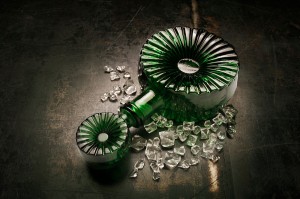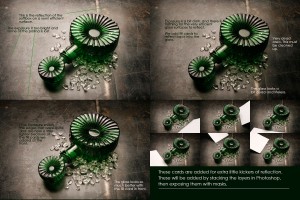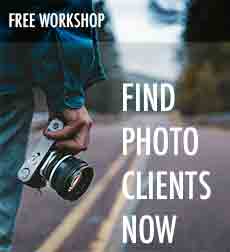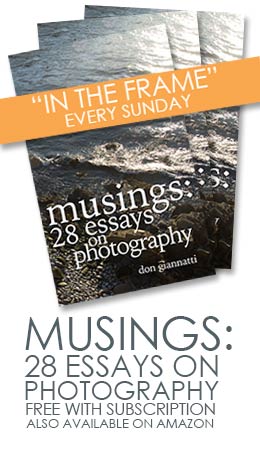This article is a look at the creation of a simple still life with one light in the studio. See it after the jump.
At this point I want to remind everyone of the incredible opportunity this week. Selina’s amazing Clarion Call is this coming Thursday/Friday, February 10, 11. It is all day both days and the lineup of guests is amazing.
Check out who will be sharing their amazing insights with you all – for FREE!
Heather Morton – Through The Buyers’ Eye
Rob Haggert – Vision and Value
Gail Mooney – Motion? Pictures?
Nick Thomas – Repositioning For Your Best Shot
Louisa Curtis – Show and Sell
Frank Meo – The Secrets of Agents
Kat Dalager – Presenting You
Keith Gentile – Databases That Deliver
Adam Sherwin – Viral and Vital
Eric Kass – Designed To Sell
Don Giannatti – Visionary Web Site
Rosh Sillars – Socialize Your Media
Jack Hollingsworth – The Twitter Tutorial
Allen Murabayashi – Google and You
This will be something that will be talked about, imitated, shared and remembered for a heck of a long time. Be in on the first one. Register here, and be ready to be pumped!
For Selina’s Teleseminar, click on the banner.
PROJECT 52, Assignment 6 Information is at the Project 52 site this week. The assignment… Chocolate. You have been assigned a last minute shoot for a local chain of restaurants for a shot for their menu – and the specialty of February… Chocolate. NOTE: Image bust be a square format image. Square to fit their menu image slot.
Lots more info over on Project 52, so jump on over and get involved. It doesn’t matter if you have not been involved from the beginning… get involved now and get your stuff ready to go pro… or at least shoot like one.
A big shout out to the folks who took my Phoenix and San Diego workshops… thanks folks, we did have a blast. Special thanks to Christine at Arte Bella for helping he San Diego workshop with a ton of behind the scenes efforts and scoring some wonderful models for us. Thanks Christine.
Next up workshop wise is Austin, Texas. March will take us to Sacramento for a workshop, and in April we are back in Omaha and West Palm Beach for back to back workshops. Check the schedule out here. There is an advance workshop being planned for the first weekend in April, but we are waiting for a few things to get nailed down. The April advanced workshop will be focused on studio lighting and still life/product work.
OK – that’s enough shop talk, so let’s get to the still life shoot complete with short video and Photoshop screen shots.
Small studio shooting, what we used to call ‘table top’ is a favorite of mine. This is a very simple shoot with only one studio light on a boom. The subject is a decanter from the kitchen and some “ice chips” that we use for drink shots for a ‘crushed ice’ look. These are made from acrylic and really look great as ice in a glass – or uncut diamonds. I usually keep 3 or 4 million dollars worth of uncut diamonds around for shots like this, but they were unavailable because my vault guy wasn’t there.
Using a single 3’x3′ softbox on a boom, I brought the light in close to the table top. The table is a metal top, so it has a medium efficiency… certainly enough to get a specular source off of the area around the glass object I am shooting.
The glass is very efficient, so the specular reflections off of the various facets and shiny surfaces. The other side of that coin is that the efficient surface will also reflect the areas where there is no light. I can choose to make all kinds of reflections with cards for a single exposure, or add them one at a time and blend them with Photoshop.
The specular on the surface extended back behind the decanter, so I placed a scrim board in front of it (flag if you will) to cut the reflection of the light in that area. Keeping the back dark with the glass lit up so well adds some dimension to the image that wouldn’t exist if the background simply stayed lit all the way from front to back.
I recommend that you try to work these out with the single image approach before going all out on the multiple shots and layers approach. I think it is very important to figure out how the speculars are created, where they go to look right and how to achieve that liquid highlight that makes efficient surfaces LOOK efficient.
A single Norman head attached to an 800WS pack set at 200WS is our light. It is brought from behind with an angle to it to help feather the light away as it comes closer to the camera. The angle also helps present a specular source right behind the glass. (Have I ever mentioned how important booms are? I have? Good. I cannot imagine being a photographer without a boom. Make it your first – or next – purchase.)
The camera is mounted to a small camera stand and locked down for the shoot. I am shooting tethered into a MacBook and using the Canon software that comes bundled with the cameras.
You can see the set up in the video below. This is what I consider a very fast, easy set up for a table top. At least one that is on a surface with the camera aimed down.
Video: (please note that we had previously built this shot “LIVE” on LE LIVE, so the folks who tuned in saw us build the basics and get the exposure down. I then made a quick vid to capture what we had done.)
Below you can see a set of images that show what happens when we are looking for exposure. Taking various readings from pointing the dome up to pointing it at the camera are taken. We begin with the dome pointing toward camera and it is too hot. Stopping down a stop makes the shot more appealing, albeit a bit darker than I want it to be.
Bringing in a fill card from the front lightens up the set as well, so I make a note to darken that within Photoshop. I call it “increasing the vignette” and in my head I saw a much smaller specular background reflection, so that would be something I may work in with a second scrim or do in Photoshop… this time Pshop.
After getting the main exposure the way I wanted it, I made an additional 6 shots with the cards in the image to give me the specular sources on the glass. This helps to keep the glass “lively’ and not simply reflecting the dark studio. Attention is paid to what the cards are doing from camera. It is best do to this with an assitant.
You can see the dark sides of the glass as it simply reflects the dark studio surrounding it.
Now I look at the shots where the card was used to create highlights and carefully cut out the places I see the difference. I add some space around this so I can feather it in after moving it over.
Holding the shift-key down and putting my move tool in the area that I have chosen with the lasso tool, I hold the shift key down and slide it to the main image. It falls on a new layer, and the shift key being down makes it fall directly on the place it needs to be. If the camera has not moved, you will probably have to do nothing to the alignment… it should be perfect.
If the camera has moved, the best thing to do is increase the magnification of the new layer, change it to 60% opacity and nudge it into alignment.
Occasionally, the fill card will have lightened the background or edges slightly causing a visible line. We fix that with a layer mask.
Click on “Add Layer Mask” icon and choose black with a small, soft edge brush. I use an opacity of 35% when I am doing this. Carefully paint the edges that you can see with the soft black brush. That will reveal the layer below and you can feather them together to make the edge disappear.
Here you can see the layers and masks used to create the final image seen below. After the layers are blended I add a blank layer and set the Blend Mode to “Overlay”. With black and white brushes and opacities of 9 I will slowly and carefully lighten the areas that need it, and darken the areas that need to be a bit darker. This method does not destroy the image nor does it change the color of the pixels… it simply darkens the luminosity of it by placing a darker or lighter mid-tone above it.
When that is done, the Tony Kuyper Luminosity Masks are applied as I see fit. I love these masks and use them on every image that passes through my little pixel factory here.
You can see the result of our efforts above.
Thanks for coming along on our little journey. We will be “LIVE” in the studio next week, so watch for the schedule on the Lighting Essentials “LIVE” page.
Thanks for coming along. We will be doing a lot more of this stuff. I promise. Follow me on Twitter, visit my About Me page, and if you are interested in one of our lighting Workshops, check out Learn to Light for more information. I am doing one in Austin at the end of this month and in Sacramento in March. They will both ROCK!










Hello, Don, sorry that this is off-topic, but I’ve got a straight-up question about the workshops and there doesn’t seem to be anyplace else to post them:
You’ve mentioned that you’ve changed the workshop format a bit. So: if I took a workshop under the old format last year, is it worth doing again this year? Or would it make more sense to take a year off and leave the opportunity for someone else?
Thanks for any info. Hey, did you know that the workshop page is blacklisted by my employer’s firewall for “unauthorized content: swimsuit/nudity”! Guess that’s ONE form of being famous!
Hey JL.
It may not have changed that much, but we do have a heavily reworked first day. We explore the way light works to create dimension a bit more, and there is more ‘learning’ and working on the Saturday with less ‘shooting’. Sunday has more shooting, and specific ‘assignments’ to do. I think the question has to be asked if you are fully good with the first workshop and if you can articulate and shoot what you learned.
I am having an advanced workshop in Phoenix in April. There will be more information coming on that one this evening.
If you are good with what you learned last year, then that is great. If you are still struggling, then a return could be valuable. BTW… you are grandfathered in at last years rate.
Thanks for doing this Don! I was wondering what you meant when you said you would normally spend a couple hours with this type of setup, now I see why. BTW I had to take a week off of the P52 assignments for some personal matters. Hope to be back on track for the weather and chocolate assignments.
Diggin’ the table.
Great tut, Don.